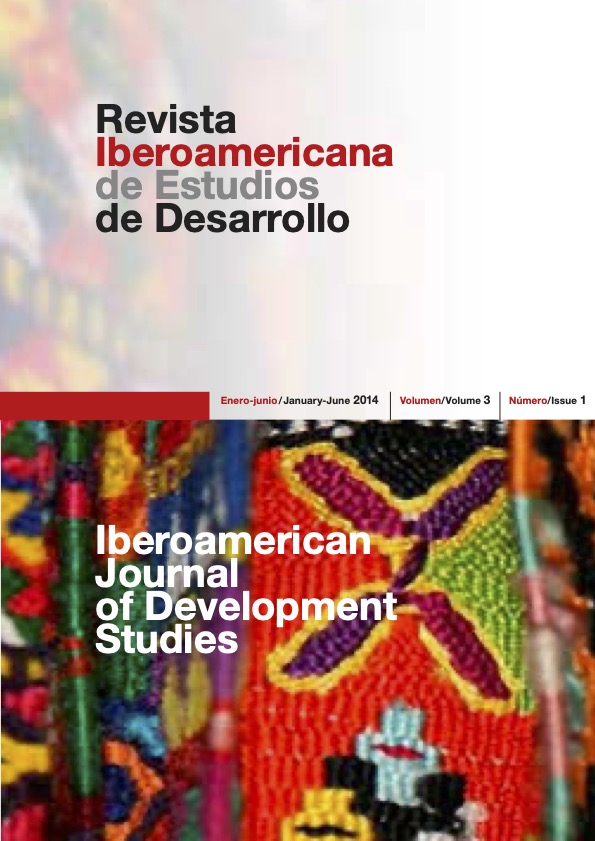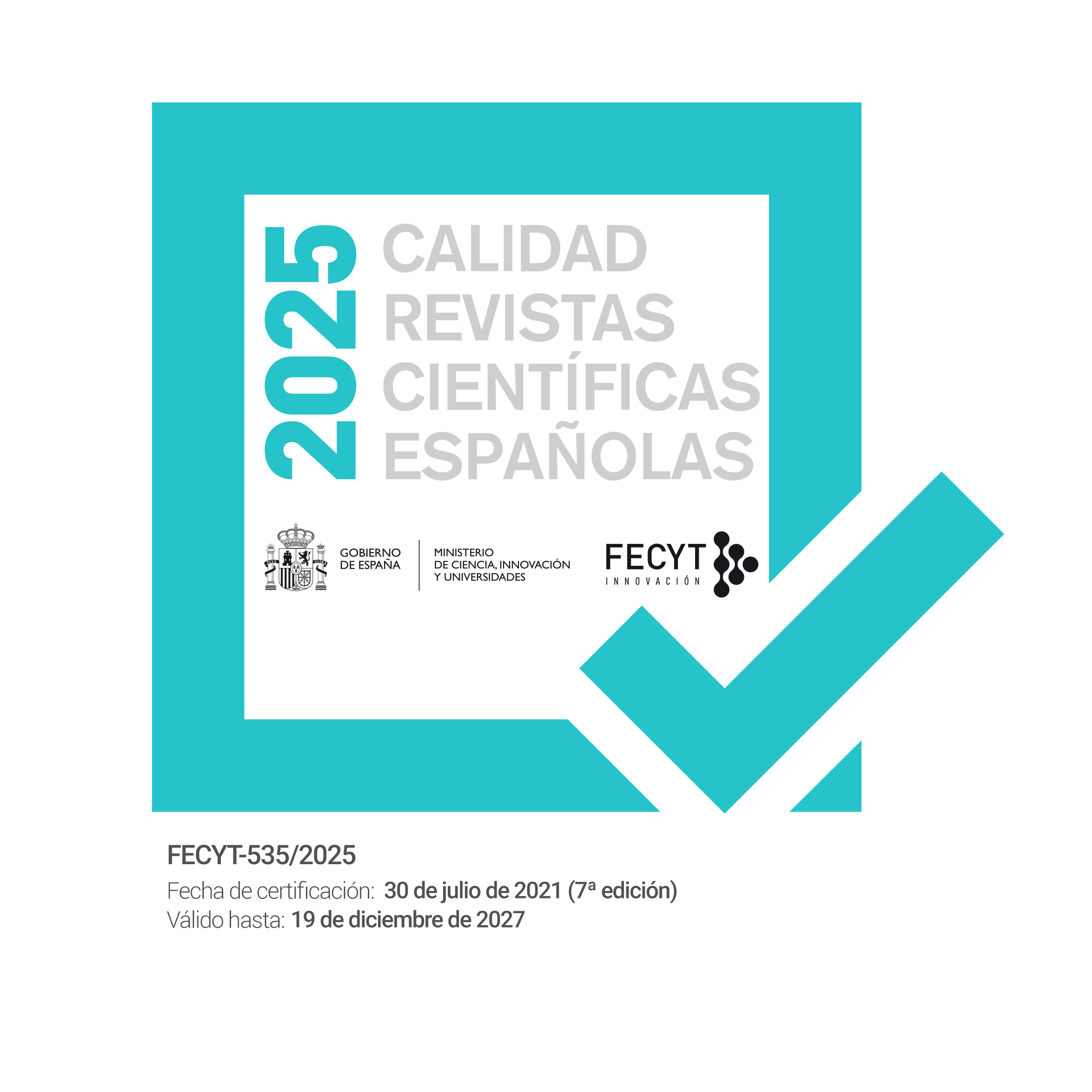Social control as supply-side harm reduction strategy. The case of an indigenous coca growing community in Peru
DOI:
https://doi.org/10.26754/ojs_ried/ijds.69Palabras clave:
coca, cocaína, usos tradicionales de la coca, reducción de daños de la oferta, política de control de drogas, PerúResumen
Los usos tradicionales de la coca han tenido lugar en Perú y Bolivia durante, al menos, los últimos tres mil años. Las organizaciones internacionales no han tenido éxito para instar la ejecución de las políticas de «cero crecimiento de coca» en esos países. Las estrategias de reducción de daños de la oferta, que se basan en el control social para limitar, aunque no abolir totalmente el cultivo de coca, están siendo implementadas actualmente en Bolivia. En este artículo, se revisan los usos tradicionales que motivan el cultivo de coca; y se analizan los datos de una encuesta realizada a 496 agricultores en una comunidad indígena para proporcionar una visión general del problema cocalero; y se explora si el control social podría, potencialmente, influir en la escala del cultivo de coca en el Perú. Los resultados sugieren que las variables de control social, como el apego, la participación y las creencias limitan el tamaño de las áreas de cultivo de coca. Estos factores, en gran medida, han sido pasados por alto y que pueden ofrecer una oportunidad para reducir las áreas de cultivo de coca si se consideran de manera explícita en el diseño de políticas de control de drogas.CITAR COMO:
García-Yi, J. (2014). Social control and as supply-side harm reduction strategies. The case of an indigenous community in Peru. Iberoamerican Journal of Development Studies, 3 (1): 58-82
Descargas
Referencias
ALLEN C (1981). To Be Quechua: The Symbolism of Coca Chewing in Highland Peru. American Ethnologist 8(1):157-171
ÁLVAREZ E (1995). Economic Development, Restructuring and the Illicit Drug Sector in Bolivia and Peru. Journal of Interamerican Studies and World Affairs 37(3):125-149
BEDFORD J, LOVELL K, TURNER C, ELSOHLY M, WILSON M (1980). The Anorexic and Actometric Effects of Cocaine and Two Coca Extracts. Pharmacology Biochemistry and Behavior 13:403-408
BEDFORD J, NAIL G, ELSOHLY H, WILSON M, TURNER C (1981b). Comparative Stimulus Properties of Two Fractions of the Coca Leaf (E. coca). Pharmacology Biochemistry and Behavior 15:907-909
BEDFORD J, WILSON M, ELSOHLY H, ELLIOT C, COTTAM G, TURNER C (1981a). The Effects of Cocaine Free Extracts of the Coca Leaf on Food Consumption and Locomotor Activity. Pharmacology Biochemistry and Behavior 14:725-728
BOLTON R (1976). Andean Coca Chewing: A Metabolic Perspective. American Anthropologist 78(3):630-634
BRUTSAERT T, MILOTICH M, FRISANCHO R, SPIELVOGEL H (1995). Coca Chewing among High Altitude Natives: Work and Muscular Efficiencies of Nonhabitual Chewers. American Journal of Human Biology 7:607-616.
BURCHARD R (1992). Coca Chewing and Diet. Current Anthropology 33(I):1-24.
BURCZYNSKI F, BONI R, ERICKSON J, VITTI T (1986). Effect of Erythroxylum coca, Cocaine and Ecgonine Methyl Ester as Dietary Supplements on Energy Metabolism in the Rat. Journal of Ethnopharmacology 16:153-166
CABIESES H (2005). Coca: en situación límite. (Interview). Lima: CEPES
CASTRO R, ZAVALETA A (2006). La Hoja de Coca en la Alimentación. Cedro, Lima
CAULKINS J, REUTER P, IGUCHI M, CHIESA J (2005). How goes the War on Drugs? An Assessment of U.S. Drug Problems and Policy. RAND Drug Policy Research Center, US
CLOC (Coordinadora Latinoamericana de Organizaciones de Campo) (2013). La Coca. Resolución sobre el tema de la Coca. http://www.cloc-viacampesina.net/ congresos/i-congreso/210-la-coca . Accessed: August 20, 2013
COLLAZOS C, URQUIETA R, ALVISTUR E (1965). Nutrición y coqueo. Simposium sobre nutrición. Revista del Viernes Médico 16:36-44
COMMISSION ON NARCOTIC DRUGS (2005). Alternative Development: A Global Thematic Evaluation. Final Synthesis Report. Forty-Eight Session. E/CN.7/2005/CRP.3. CND, Vienna
CORDERO T (2002). Evaluación Nutricional de la Proteína de la Hoja de Coca (Erythroxylum coca Lamark var.coca). Undergraduate Thesis. Chemical Department. UNMSM, Peru
DIETZ E, LESSMANN R, KOTOWSKI-ZISS J, BERG C (2001). Drugs and Development in Latin America. Strategies. Experiences and Project Examples from the Work of GTZ. GTZ, Germany
DUKE J, AUKLIK D, PLOWMAN T (1975). Nutritional Value of Coca. Botanical Museum Leaflets. Harvard University 24(6): 113-119
DURAND F (2005). El Comercio Informal de la Coca para Uso Tradicional. DESCO, Lima
EUROPEAN UNION [EU] (2009). A Report on Global Illicit Drug Markets 1998-2007. The Netherlands: European Commission Responsible of General Justice, Freedom and Security
FARTHING L, KOHL B (2012). Supply-side harm reduction strategies: Bolivia’s experiment with social control. International Journal of Drug Policy 23:488-494
FAVIER R, CÁCERES E, GUILLÓN L, SEMPORE B, SAUVAIN M, KOUBI H, SPIELVOGEL H (1996b). Coca Chewing for Exercise: Hormonal and Metabolic Responses of Nonhabitual Chewers. Journal of Applied Physiology 81:1901-1907
FAVIER R, CÁCERES E, KOUBI B, SEMPORE B, SAUVAIN, SPIELVOGEL H (1996a). Effects of Coca Chewing on Hormonal and Metabolic Responses During Prolonged Submaximal Exercise. Journal of Applied Physiology 80:650-655
FAVIER R, CÁCERES E, SEMPORE B, COTTET-EMARD J, GAUQUELIN G, GHARIB C, SPIELVOGEL H (1997). Fluid Regulatory Hormone Response to Exercise After Coca- Induced Body Fluid Shifts. Journal of Applied Physiology 83:376-382
FONANPE. Fondo Nacional de Financiamiento de la Actividad Empresarial del Estado (2005). Perú: Oferta de Hoja de Coca. Estadística Básica (2001-2004). FONANPE, Lima
GAGLIANO J. (1963). The Coca Debate in Colonial Peru. The Americas 20(1):43-63
GARCÍA J, ANTEZANA J (2009). Diagnóstico de la Situación del Desvío de IQ al Narcotráfico. ConsultAndes and DEVIDA, Lima
GARCÍA-GIESMANN J (1950). Estudio Histopatológico del Hígado de Ratas Tratadas con Polvos de Coca. Revista de Farmacología y Medicina Experimental 3:93-96
GARCÍA-YI J, GROTE U (2012). Data collection: experiences and lessons learned by asking sensitive questions in a remote coca growing región in Peru. Survey Methodology 28(2):131-141
GLAVE M, ROSEMBERG C (2005). La Comercialización de Hoja de Coca en el Perú: Análisis del Comercio Formal. GRADE, Lima
GREENFIELD V, PAOLI L (2012). If supply-oriented drug policy is broken, can harm reduction help fix it? Melding disciplines to advance international drug policy. International Journal of Drug Policy 23:6-15
GRINSPOON L, BAKALAR J (1981). Coca and Cocaine as Medicines: An Historical Review. Journal of Ethnopharmacology 3:149-159
HAMMERSVIK E, SANDBERG S, PEDERSEN W (2012). Why small-scale cannabis growers stay small: Five mechanisms that prevent small-scale growers from going large scales. International Journal of Drug Policy 23:458-464
HANNA J (1974). Coca Leaf Use in Southern Peru: Some Biosocial Aspects. American Anthropologist 76(2):281-296
HARM REDUCTION INTERNATIONAL (2013). What is harm reduction? Available at: http://www.ihra.net/what-is-harm-reduction . Accessed on: October 29, 2013
HASTORF C (1987). Archaeological Evidence of Coca (Erythroxylum coca, Erythroxylaceae) in the Upper Mantaro Valley, Peru. Economic Botany 41(2):292-301
HIRSCHI T (1969). A control theory of delinquency. In: Causes of Delinquency. University of California Press, 309
HOLMSTEDT B, JAATMAA E, LEANDER K, PLOWMAN T (1977). Determination of Cocaine in Some South American Species of Erythroxylum using Mass Fragmentography. Phytochemistry 16:1753-1755 INCB. International Narcotics Control Board (2009). Report on the International Narcotics Control Board for 2008. United Nations, New York
INSTITUTO INDIGENISTA INTERAMERICANO (1989). La Coca…, tradición, rito, identidad. IIA, México
JELSMA M (2012). Harm reduction for the supply-side: Its time has come. International Journal of Drug Policy 23:20-21
JONES J, AMLER B (1997). Report on Thematic Evaluation of Alternative Development in Peru. United Nations Drug Control Programme, Austria
KEMPF K, DECKER S (1994). The theory of social control: does it apply to the very young? Journal of Criminal Justice 22(2):89-105
KENNEDY M, REUTER P, RILEY K (1994). A Simple Economic Model of Cocaine Production. RAND’s National Defense Research Institute, U.S
LLORENS J (2004). Uso Traditional de la Coca en el Perú: Síntesis Histórica. In: Rospigliosi F (2004). El Consumo Traditional de la Hoja de Coca en el Perú. Instituto de Estudios Peruanos, Lima
MANSFIELD D (2006). Development in a Drugs Environment: A Strategic Approach to Alternative Development. Discussion Paper. Development Oriented Drug Control Program. GTZ, Germany
MARTIN R (1970). The Role of Coca in the History, Religion, and Medicine of South American Indians. Economic Botany 24(4):422-438
MAYER E (1993). Factores Sociales en la Revaloración de la Hoja de Coca. Debate Agrario: Análisis y Alternativas. 17. Lima, Perú
MAYER E (2004). Casa, Chacra y Dinero. Economías Domésticas y Ecología en Los Andes. Series: Estudio de la Sociedad Rural 28. Instituto de Estudios Peruanos, Lima
NARANJO P (1981). Social Function of Coca in Pre-Columbian America. Journal of Ethnopharmacology 3:161-172
NEGRETE J (1978). Coca leaf chewing: a public health assessment. British Journal of Addiction 73:283-290
NOSYK B, WOOD E (2012). Evidence-based drug policy: It starts with good evidence and ends with policy reform. International Journal of Drug Policy 23:423-425
OBANDO E (2006). U.S. Policy toward Peru: At Odds for Twenty Years. In: Loveman B, Addicted to Failure. U.S. Security Policy in Latin America and the Andean Region. Rowman and Littlefield Publishers Inc., U.S
OFFICE OF TECHNOLOGY ASSESSMENT (1993). Alternative Coca Reduction Strategies in the Andean Region. Washington. Congress, U.S
PARKESON P (1983). The Inca Coca Monopoly: Fact or Legal Fiction? Proceedings of the American Philosophical Society 127(2):107-123
PLOWMAN T (1981). Amazonian Coca. Journal of Ethnopharmacology 3:195-225
RAMOS-ALIAGA R, SAN ROMÁN K, SOLANO D (2004). Valor Proteico de la Hoja de Coca Libre de Alcaloides y Pigmentos. Revista de la Sociedad Química del Perú 70(2):67-75
RIVERA M, AUFDERHEIDE A, CARTMELL L, TORRES C, LANGSJOEN O (2005). Antiquity of Coca-Leaf Chewing in the South Central Andes: A 3000 Year Archaeological Record of Coca-Leaf Chewing from Northern Chile. Journal of Psychoactive Drugs 37(4):455-458
RODRÍGUEZ A (2003). La Economía de la Coca (Erythroxylum coca) en el Valle del Río Apurimac. Escuela de Post Grado. Magister Scientiae Thesis. Specialization in Agricultural Economics. Universidad Nacional Agraria La Molina. Lima, Perú
ROSPIGLIOSI F (2004). Analisis de la Encuesta DEVIDA-INEI. In: Rospigliosi F (2004). El Consumo Tradicional de la Hoja de Coca en el Perú. Instituto de Estudios Peruanos, Lima
ROUSE S, ARCE M (2006). The Drug-Laden Balloon: U.S. Military Assistance and Coca Production in the Central Andes. Social Science Quarterly 87(3):540-557
SOUTH R (1977). Coca in Bolivia. Geographical Review 67(1):22-33 TABARES E, ROSALES R (2005). Políticas de Control de Oferta de Coca: la Zanahoria y el Garrote. Desarrollo y Sociedad, 55
THOUMI F (2004). A Modest Proposal to Clarify the Status of Coca in the United Nations Conventions. Journal Crime, Law and Social Change 42:297-307
TRACE M (2012). Measuring drug law enforcement. From process to outcomes. International Journal of Drug Policy 23:17-18 UN. Economic and Social Council (2009). Proposal of amendments by Bolivia to article 49, paragraphs 1 (c) and 2 (e)
UNODC (2001). Alternative Development in the Andean Area. The UNDCP Experience. Revised Edition. ODCCP Studies on Drugs and Crime. New York, U.S
UNODC (2005). Thematic Evaluation of UNODC Alternative Development Initiatives. Independent Evaluation Unit. UNODC, Vienna
UNODC (2009). Political Declaration and Plan of Action on Internatinal Cooperation towards an Integrated and Balanced Strategy to Counter the World Drug Problem. UNODC, Vienna
UNODC (2010). World Drug Report 2010. UNODC, New York
UNODC (2011). Perú. Monitoreo de Cultivos de Coca 2010. UN, Lima
UNODC OFFICE IN PERU (1999). Desarrollo Alternativo del lnambari y Tambopata. Documento de Proyecto AD/PER/99/D96. Availability: http://www.onudd.org.pe/web/Html/Templates/proyectos.htm . (accessed on June 15, 2009) U.S. Department Of State (2012). International Narcotics Control Strategy Report. Volume I: Drug and Chemical Control. U.S.: Bureau for International Narcotics and Law Enforcement Affairs
U.S. OFFICE OF NATIONAL DRUG CONTROL POLICY (2012). National Drug Control Strategy. Data Supplement. U.S.: ONDCP
VARGAS R (2011). Desarrollo Alternativo en Colombia y Participación Social. Propuestas hacia un cambio de estrategia. DIAL, Colombia
VEE G, FINK G, CONSTANTINE G (1983). Anorexic Activity of Cocaine and Coca Extract in Naive and Cocaine Tolerant Rats. Pharmacology Biochemistry and Behavior 18:515-517
VEILLETE C, NAVARRETE-FRÍAS (2005). Drug Crop Eradication and Alternative Development in the Andes. Report RL33163. Congressional Research Service, U.S
WALSH J (2009). Lowering Expectations. Supply Control and the Resilient Cocaine Market. Washington Office on Latin America (WOLA), U.S
WEIL A (1981). The Therapeutic Value of Coca in Contemporary Medicine. Journal of Ethnopharmacology 3:367-376
Descargas
Publicado
Número
Sección
Licencia
Derechos de autor 2014 Jaqueline Garcia-Yi

Esta obra está bajo una licencia internacional Creative Commons Atribución-NoComercial-SinDerivadas 4.0.






